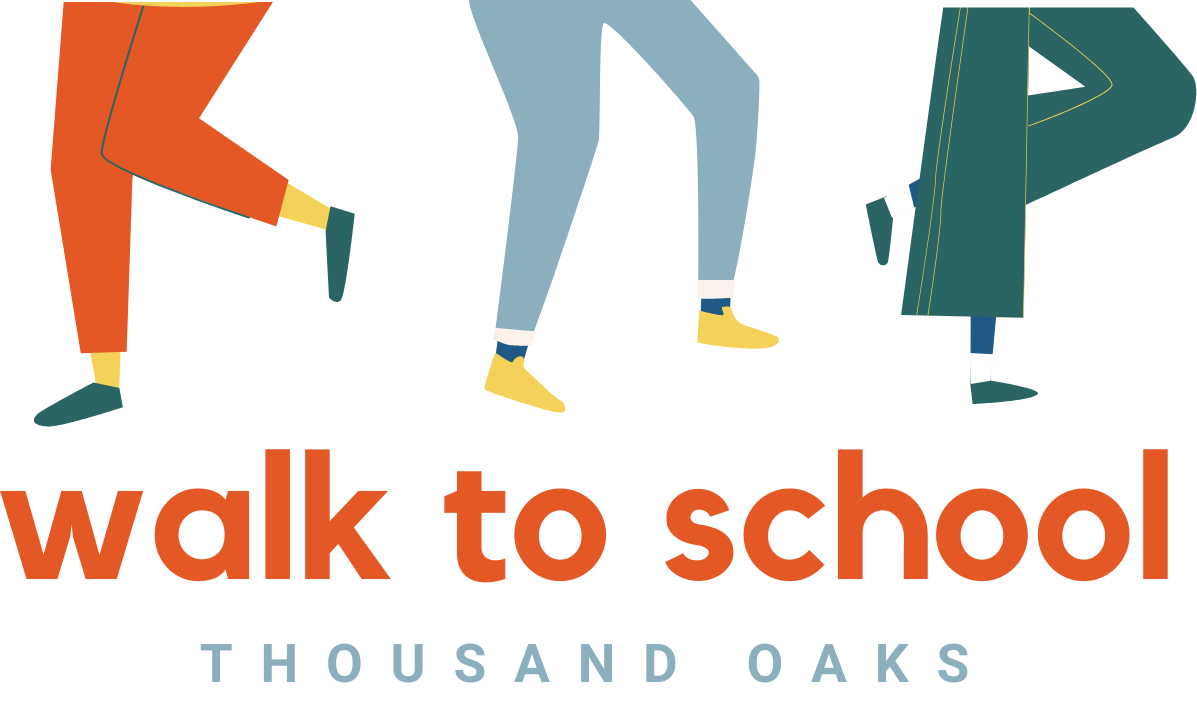
City Crossing Guard Program Standards and Policies
The City Crossing Guard Program began in Thousand Oaks in 1964, entirely funded by the City as a service to residents at the public schools. The City uses certain metrics and guidelines to help determine the need for a crossing guard based on the combination of pedestrian and vehicle traffic during morning arrival and afternoon dismissal periods. This ensures that all crossing guard requests are treated uniformly. As of May 2025, 24 City-managed and funded school crossing guard locations support the Conejo Valley Unified School District school campuses citywide.
On February 14, 2023, City Council voted to approve a revised policy to modify the crossing guard program in Thousand Oaks, making qualifying for a crossing guard in many areas easier and standardizing the criteria.
How it works
The policy ensures that no crossing guard stations are eliminated prior to the 25-26 academic year. However, a few changes to the policy will require everyone to work together to increase pedestrian use to maintain their crossing guard for academic years to come. Annually, the Public Works Director will provide the Traffic and Transportation Advisory Commission (TTAC) with a comprehensive report on all crossing guard locations.
The report will include a list of approved or denied requests for new locations and any location proposed for closure. A public forum for residents to provide testimony and comments on the report will be provided.
This report will be presented to TTAC no later than 60 days after the Public Works Director has made their determination. After the TTAC meeting, City Council and CVUSD shall be notified of any new locations to be added or closed for the upcoming school year.
Crossing guards are assigned to 14 school campuses across the City.
The City Crossing Guard Program has a Program Administrator, a Lead Guard, and a Crossing Guard III who support approximately 31 crossing guards when fully staffed.
Current Crossing Guard Intersections and Counts
Locations That Meet Current Standards as of May 2025
Acacia ES/Redwood MS at Gainsborough/Dover
Colina MS at Hillcrest/Rancho
Conejo at Conejo School/Los Feliz
Cypress at Kimber/Havenside
Earths at Redfield/Michael
Lang Ranch at Whitechapel/Sandhurst
Los Cerritos MS at Erbes/Avenida de las Flores
Mates at La Granada/Wilder
Redwood MS at Gainsborough/Camino Manzanas
Sequoia MS at Borchard/Theresa
Sycamore Cyn ES/MS at Via Rio/Calle Del Prado
Sycamore Cyn ES/MS at Via Rio/Via Mirabella
Weathersfield at Calandria/Darlington
Wildwood at Arboles/Velarde
Mimimum Count Standards
| Mimimum Peak Hour Volumes AM and PM | ||
|---|---|---|
| Crossing Type | Vehicles | Pedestrians |
| Uncontrolled Intersection-
No traffic control on higher volume approaches (2-way stop) |
State- 350
City- 300 |
State- 40
City- 20 |
| All Way Controlled Stop-
Stop control on all approaches |
State- 500
City- 300 |
State- 40
City- 20 |
City Council Updates and Reports
Traffic Commission Updates and Reports
-
The program changes will not begin until the 2025-2026 school year, and the crosswalk has to fail two years in a row. If your crosswalk is on the list above for not meeting standards, now is the time to take action in your community. Increasing the number of people using the crosswalk both in the morning and afternoon helps ensure the intersection stays staffed. Engage your school PTA , principal, and others to start planning ways to increase foot traffic. Visit our Organize page to get started!
-
If your local intersection meets the standards, that means there are a lot of people using it, or it meets some of the other criteria! Now is the time to make sure your community stays engaged and aware of the benefits of getting to school on foot, bike, or scooter! Visit our Organize page to help keep people engaged in walking and biking to school!
-
The demand for crossing guards far outweighs interested and qualified candidates. At times, intersections may not have a guard present due to illness, shortage of alternates, etc. The City strives to staff intersections at all times and works to do so. If you are interested in becoming a guard, visit the City’s career opportunities.
-
If you are interested in having a traffic study conducted on an intersection near your school of interest, please contact Program Administrator Grahame Watts at gwatts@toaks.org or 805-449-2453, with the location and any additional details you can provide to help the team evaluate the need for a future study.
-
Additional Criteria/Alternatives
Four additional criteria were added for consideration when looking at crossing guard placement. Only one criterion may be applied per location. The four criteria are as follows:
-
Speed Limit Alternative
If the highest speed limit for an uncontrolled intersection exceeds 35 mph, the City’s minimum standard for vehicle conflicts may be lowered by ten percent.
-
75% MUTCD Alternative
If a location, regardless of intersection type, fails to meet the City minimum standard for AM and PM pedestrian and vehicle conflict counts, the location will still be eligible for a crossing guard if all three of the remaining criteria meet the higher MUTCD (Manual on Uniform Traffic Control Devices) minimum standards.
-
Traffic Volume Alternative
If both AM and PM vehicle counts at an uncontrolled intersection exceed 1,000 vehicles but the location does not achieve the minimum pedestrian standard, the location is eligible for a crossing guard so long as each of the pedestrian counts is not less than ten.
-
Road Width Alternative
If the width of the longest crossing leg of an uncontrolled intersection exceeds 40 feet, the City’s minimum standard for vehicle conflicts may be lowered by ten percent.
FAQs about Crossing Guards in Thousand Oaks
What hours are Crossing Guards present?
Crossing Guards are present during school arrival and dismissal times established by the Conejo Valley Unified School District. Each location typically has a morning and afternoon crossing assignment.
Can I give my local Crossing Guard a gift?
As City employees, Crossing Guards are prohibited from accepting cash gifts or equivalents such as gift cards. For questions, please email Grahame Watts, gwatts@toaks.gov
How are City Crossing Guards trained?
All Crossing Guards participate in an annual field training class provided by the City and receive two site evaluations on their skills each school year. Refresher training during the year is offered as needed.
What are the Crossing Guard Program objectives?
Facilitate and assist the pedestrian crossing of streets in designated crosswalks
Deter pedestrians from crossing streets in a manner that creates conflicts between pedestrians and vehicles
Inform and alert drivers, with signage and hand signals when pedestrians are about to enter crosswalks
How do I contact my school with event ideas to get more kids walking and biking?
Click here for a directory of CVUSD schools.
What primary responsibilities do Crossing Guards have in our community?
Crossing Guards do so much to encourage safety in our community! They help monitor and assist in crossing school-age children during peak traffic times at select locations, provide appropriate safety instructions for children crossing streets and intersections, and watch traffic flow and wait for an appropriate gap between vehicles to lead groups of school children safely across a street.
How many Crossing Guard positions is the City filling?
The City is interviewing applicants to fill openings for part-time opportunities. Apply immediately to be considered. Regular assignment and substitute (on-call) positions are available. Hours for the 24-25 school year are typically 1-1.5 hours in the morning and 1-1.5 hours in the afternoon depending on the school location and schedule.
Who do I talk to about the City Crossing Guard program?
Contact Program Administrator Grahame Watts at gwatts@toaks.org or (805) 449-2453

